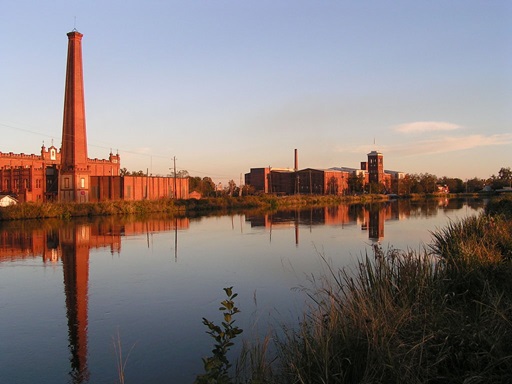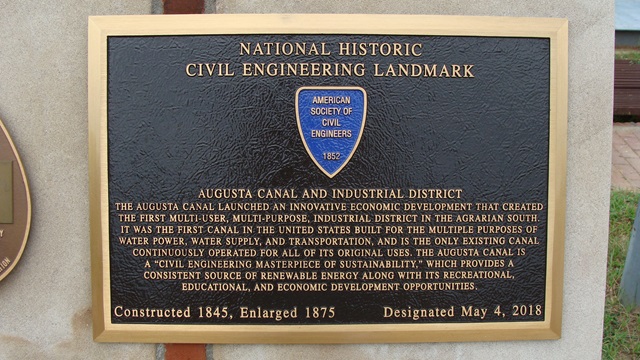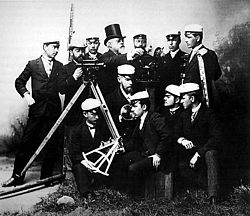Structural engineering[edit]
Structural engineering is concerned with the structural design and structural analysis of buildings, bridges, towers, flyovers (overpasses), tunnels, off shore structures like oil and gas fields in the sea, aerostructure and other structures. This involves identifying the loads which act upon a structure and the forces and stresses which arise within that structure due to those loads, and then designing the structure to successfully support and resist those loads. The loads can be self weight of the structures, other dead load, live loads, moving (wheel) load, wind load, earthquake load, load from temperature change etc. The structural engineer must design structures to be safe for their users and to successfully fulfill the function they are designed for (to be serviceable). Due to the nature of some loading conditions, sub-disciplines within structural engineering have emerged, including wind engineering and earthquake engineering.[29]
Design considerations will include strength, stiffness, and stability of the structure when subjected to loads which may be static, such as furniture or self-weight, or dynamic, such as wind, seismic, crowd or vehicle loads, or transitory, such as temporary construction loads or impact. Other considerations include cost, constructibility, safety, aesthetics and sustainability.
Surveying[edit]
Main articles: Surveying and Construction surveying
Surveying is the process by which a surveyor measures certain dimensions that occur on or near the surface of the Earth. Surveying equipment such as levels and theodolites are used for accurate measurement of angular deviation, horizontal, vertical and slope distances. With computerisation, electronic distance measurement (EDM), total stations, GPS surveying and laser scanning have to a large extent supplanted traditional instruments. Data collected by survey measurement is converted into a graphical representation of the Earth's surface in the form of a map. This information is then used by civil engineers, contractors and realtors to design from, build on, and trade, respectively. Elements of a structure must be sized and positioned in relation to each other and to site boundaries and adjacent structures.
Although surveying is a distinct profession with separate qualifications and licensing arrangements, civil engineers are trained in the basics of surveying and mapping, as well as geographic information systems. Surveyors also lay out the routes of railways, tramway tracks, highways, roads, pipelines and streets as well as position other infrastructure, such as harbors, before construction.Land surveying
In the United States, Canada, the United Kingdom and most Commonwealth countries land surveying is considered to be a separate and distinct profession. Land surveyors are not considered to be engineers, and have their own professional associations and licensing requirements. The services of a licensed land surveyor are generally required for boundary surveys (to establish the boundaries of a parcel using its legal description) and subdivision plans (a plot or map based on a survey of a parcel of land, with boundary lines drawn inside the larger parcel to indicate the creation of new boundary lines and roads), both of which are generally referred to as Cadastral surveying.

Construction surveying is generally performed by specialized technicians. Unlike land surveyors, the resulting plan does not have legal status. Construction surveyors perform the following tasks:Surveying existing conditions of the future work site, including topography, existing buildings and infrastructure, and underground infrastructure when possible;
"lay-out" or "setting-out": placing reference points and markers that will guide the construction of new structures such as roads or buildings;
Verifying the location of structures during construction;
As-Built surveying: a survey conducted at the end of the construction project to verify that the work authorized was completed to the specifications set on plans.
Transportation engineering[edit]
Main article: Transportation engineering
Transportation engineering is concerned with moving people and goods efficiently, safely, and in a manner conducive to a vibrant community. This involves specifying, designing, constructing, and maintaining transportation infrastructure which includes streets, canals, highways, rail systems, airports, ports, and mass transit. It includes areas such as transportation design, transportation planning, traffic engineering, some aspects of urban engineering, queueing theory, pavement engineering, Intelligent Transportation System (ITS), and infrastructure management.
Municipal or urban engineering[edit]


Water resources engineering[edit]

Water resources engineering is concerned with the collection and management of water (as a natural resource). As a discipline it therefore combines elements of hydrology, environmental science, meteorology, conservation, and resource management. This area of civil engineering relates to the prediction and management of both the quality and the quantity of water in both underground (aquifers) and above ground (lakes, rivers, and streams) resources. Water resource engineers analyze and model very small to very large areas of the earth to predict the amount and content of water as it flows into, through, or out of a facility. Although the actual design of the facility may be left to other engineers.
Hydraulic engineering is concerned with the flow and conveyance of fluids, principally water. This area of civil engineering is intimately related to the design of pipelines, water supply network, drainage facilities (including bridges, dams, channels, culverts, levees, storm sewers), and canals. Hydraulic engineers design these facilities using the concepts of fluid pressure, fluid statics, fluid dynamics, and hydraulics, among others.

Civil engineering systems[edit]
Civil engineering systems is a discipline that promotes the use of systems thinking to manage complexity and change in civil engineering within its wider public context. It posits that the proper development of civil engineering infrastructure requires a holistic, coherent understanding of the relationships between all of the important factors that contribute to successful projects while at the same time emphasizing the importance of attention to technical detail. Its purpose is to help integrate the entire civil engineering project life cycle from conception, through planning, designing, making, operating to decommissioning.[30][31]
Visit: https://civil-engineering-conferences.scifat.com/
Nominate Link: https://x-i.me/pravnom
Member Link: https://x-i.me/civilmem
Get Connected Here:
--------------------------------------
--------------------------------------
youtube.com/channel/UC3bk75P_uoV_D1uFxE9DbZw
instagram.com/leo.lily121/
youtube.com/channel/UC3bk75P_uoV_D1uFxE9DbZw
https://twitter.com/home











